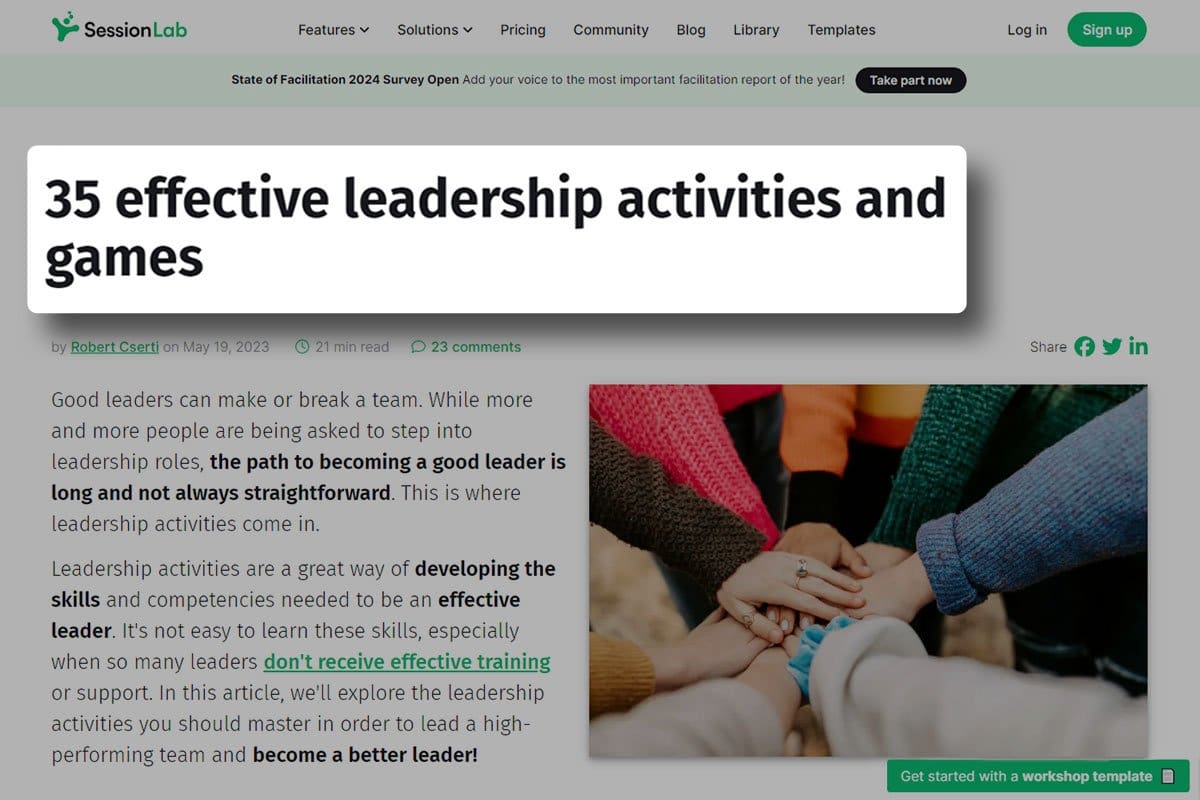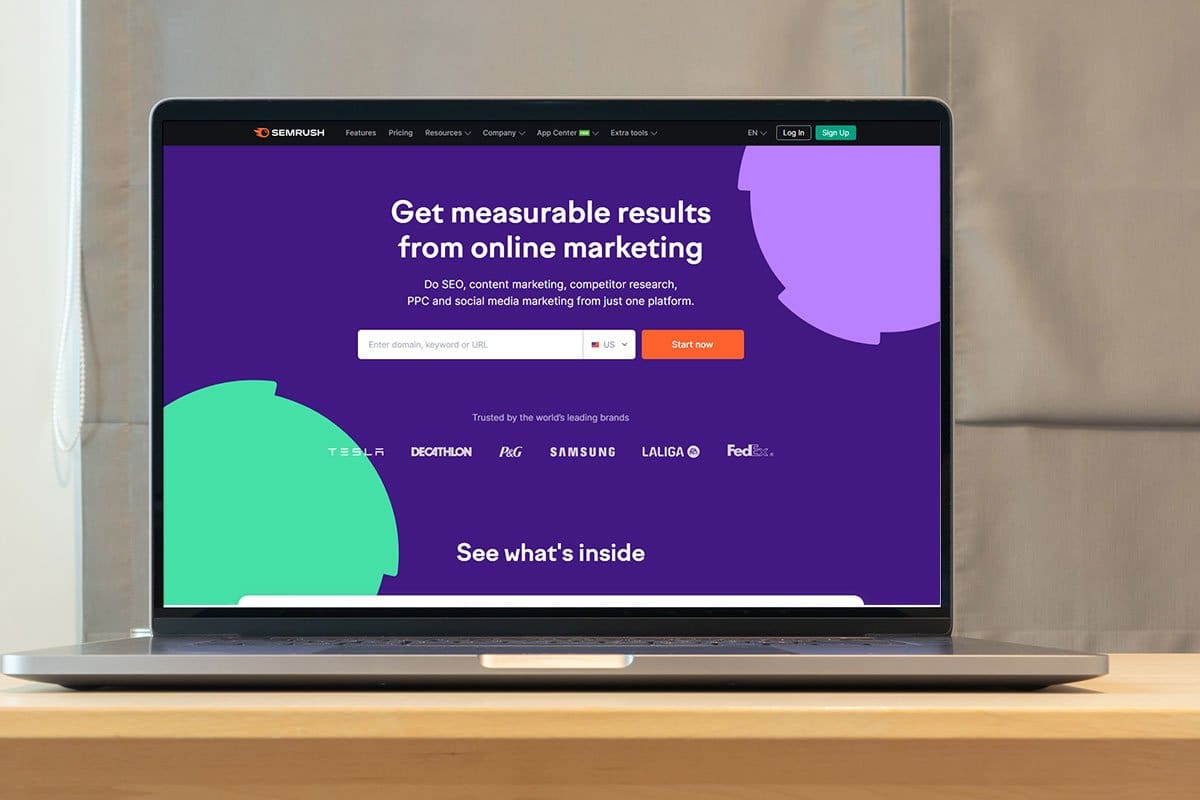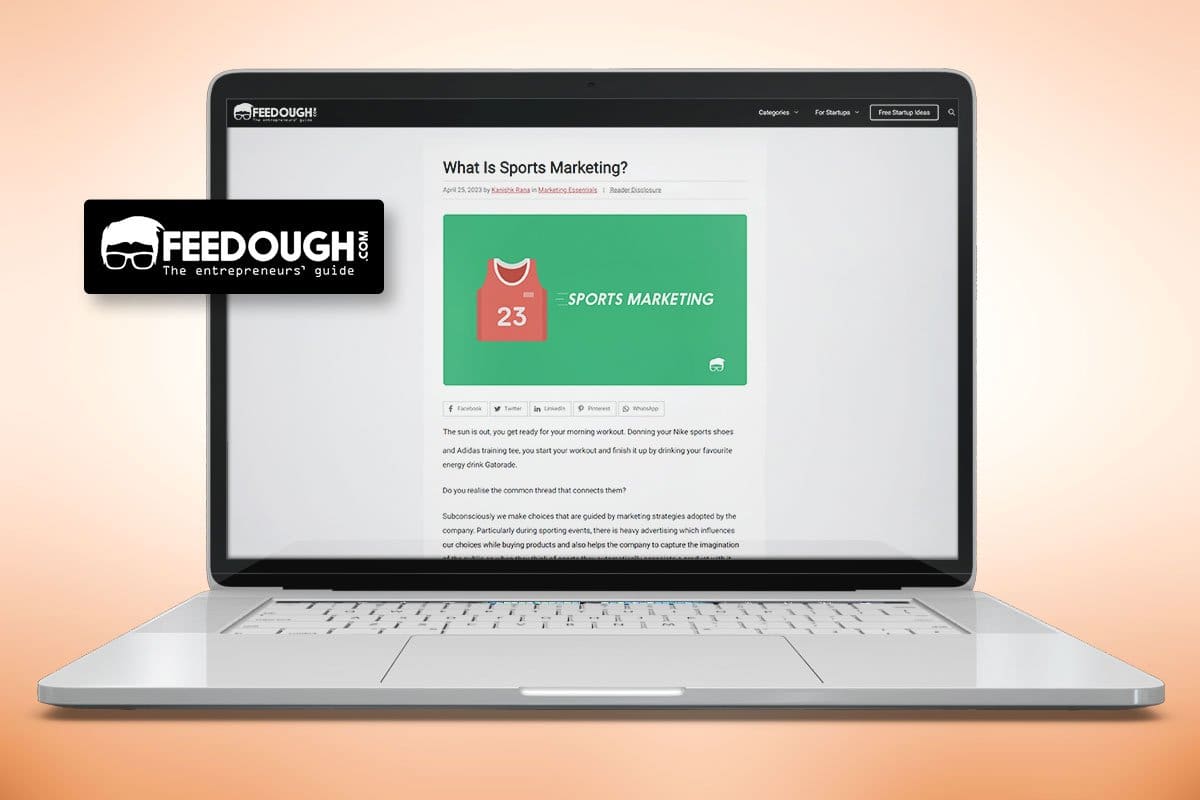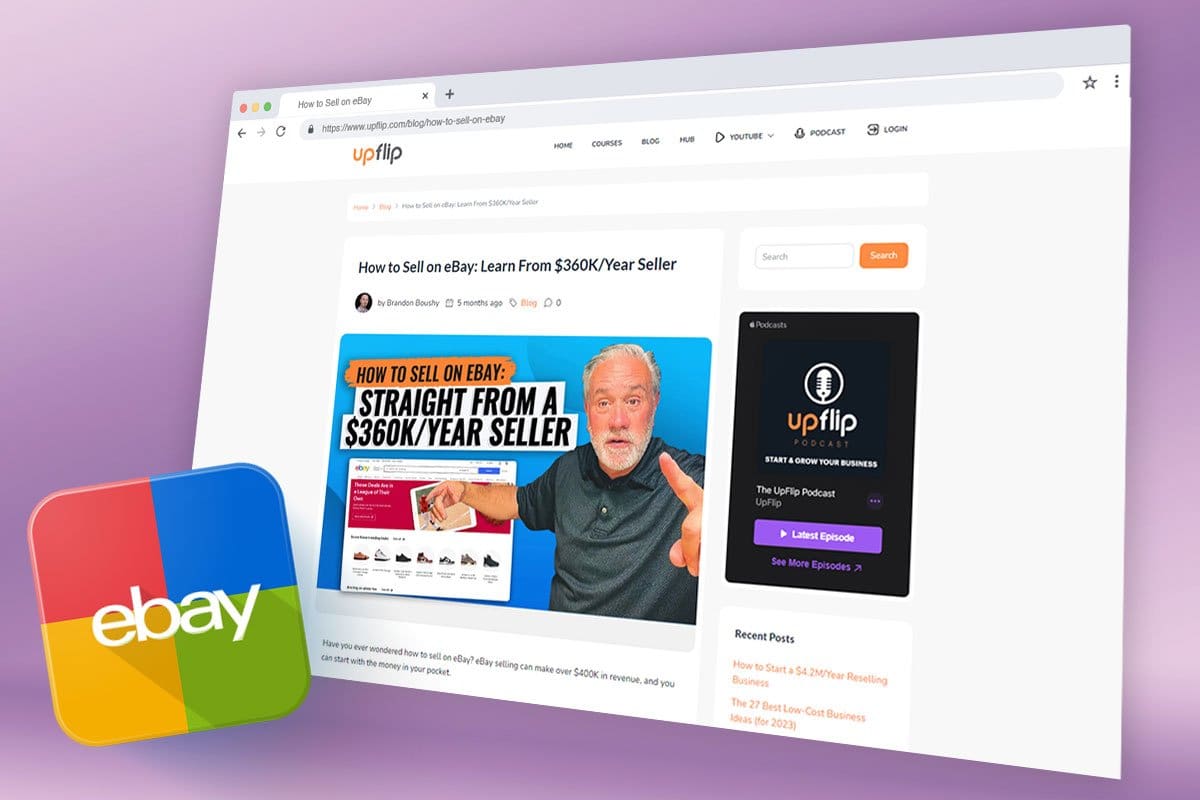Selling on Amazon: 2024 Beginners Guide
February 2, 2024
February 2, 2024

Selling on Amazon is a lucrative field. The tech behemoth has so many ways to create an Amazon store and generate sales.
We talked to leading pet supplies seller Casey Walters, who started ShedDefender to protect his friends’ couches from pet messes. From there, he appeared on Shark Tank and is currently making $1.5 million in yearly revenue.
He makes two-thirds of his revenue from selling on Amazon, which gives you a good idea of how important Amazon is when you sell online.
We’ll share tips about creating an Amazon store, the importance of using Fulfillment by Amazon (also known as Amazon FBA), and how to encourage reviews without violating the Amazon Seller agreement.
Get ready to sell on Amazon!

Jungle Scout, a leader in Amazon analytics, did research that found most new sellers start selling on Amazon with less than $5K. This covers their product costs, Amazon fees, and other required costs.
That’s consistent with how Casey Walters started selling ShedDefender on Amazon FBA:
Hear more in our exclusive interview:
Selling on Amazon is highly beneficial to new businesses. Some of the benefits of becoming an Amazon seller include the ability to:
Want to know how?
Casey used Fulfilment by Amazon to deliver orders with the speed and reliability of Amazon Prime. Customers love the speed of delivery, which will help you increase sales and encourage repeat purchases.
In fact, Casey sells twice as many products on Amazon as he does on his own website, and it means he’s earning an extra $100K per month!
When you sell on Amazon, you can have Amazon manage your shipping. Amazon gets huge discounts because of its purchasing power and delivery network. That’s why FBA saves 30% off standard shipping and up to 70% on premium shipping options.
Selling on Amazon FBA means Amazon handles payment and order processing, customer inquiries, returns, and review software. Free up your time to focus on product development, marketing, and delighting customers.
Selling on Amazon gives you access to a global network with hundreds of fulfillment centers to sell products globally without figuring out the logistics.

Starting an Amazon business has never been easier. There are so many ways Amazon sellers can sell on Amazon. You’ll want to follow this easy 15-step process to selling on Amazon:
1. Start with market research
2. Find your niche
3. Create a business plan
4. Identify product suppliers
5. Place orders
6. Set up seller account
a. Configure your account
b. Enroll your brand
7. List products
a. Take good photos
b. Be descriptive
8. Research the right selling price
9. Package items with care
10. Select a fulfillment method
a. Amazon FBA
b. Self Fulfillment
c. Dropshipping
d. Amazon Print-on-Demand
11. Manage your inventory
12. Promote products
13. Get product reviews
14. Optimize listings
15. Grow with tools
Get ready to learn how to sell on Amazon.
You’ll want to decide what to sell online. The best way to do that is to establish what kind of eCommerce store you want to be. A good Amazon store will offer something people will pay for, and you won’t mind spending your time becoming an expert on the subject.
Once you have an online business idea, you’ll want to establish its potential to grow into a profitable business. That requires market research.
The key to selling on Amazon is finding product categories to buy products at a competitive price, markup, and generate sales. Check out our blog about the best products to sell on Amazon. We discuss considerations about product categories including:
Next, you’ll want to write a business plan that outlines your approach to selling on Amazon.
Your business plan can be as straightforward or as complicated as you want to make it. The more detailed the business plan you write, the more accessible selling products will be. Those with a plan have a 19% higher success rate.
That doesn’t mean you have to be confident you’ll achieve success from Day 1. As Casey told us,
At this point, you have a successful sales performance target, so it’s time to start finding the products to sell in your eCommerce store.
Next, you’ll want to find manufacturers that can create the products you need and ship products to you. You’ll want to look for quality manufacturers that won’t ship counterfeit products.
You might need to find a manufacturer—or check out Amazon Merch to see if they carry the products you want to sell.
Once you have found a manufacturer or wholesaler for your products, you must place an order and get the products shipped to you. Before you order, ensure the products aren’t on the restricted product list.
Alternatively, you may be able to have them shipped to an Amazon warehouse, though you’ll probably want to check your own products to ensure they meet quality control standards before shipping them to the Amazon warehouse (especially if you’re just getting started).
Next, it’s time to start your Amazon Seller Account.

All Amazon sellers will need an Amazon Seller Account before they can open their Amazon store and create product listings.
You’ll need to choose a selling plan. There are two options: Individual and Professional. The individual selling plan is free to start and $0.99 per item sold.
Meanwhile, the Professional selling plan is $39.99 and offers lots of tools to boost sales and manage items in bulk.
To become an Amazon seller, you’ll need to configure your account following the steps below:
You can create your account using the email address associated with your Amazon customer account or opt to set it up using a separate business email address.
Note that receiving approval to open an Amazon Seller Account can take a few days to a few months.
You’ll want to enroll in brand protection through the Amazon Brand Registry. When you have a trademarked brand image, you can sign up, and Amazon will help protect your brand’s intellectual property and provide tools for a more creative brand experience.

You can create a product detail page once your Amazon account is set up. You’ll need a product detail page for each product you offer, but product pages allow for variations (different color and size combinations) on a single page.
Two of the most critical features of a product detail page include the photos and the text, which we’ll discuss to help you create a beautiful Amazon store.
Many sellers emphasize the importance of beautiful pictures to help sell their products on Amazon and other eCommerce stores.
Amazon sellers should follow Amazon photo requirements precisely for the most success. Some types of products have additional requirements, but the main requirements are:
Any other photos should follow the exact technical requirements, but you are not required to use a white background or the product identifier as the title. You can include videos, infographics, and models, except for babies.
Pro Tip: Review specific product category requirements before adding pictures to your product detail page.
An Amazon store with compelling titles and descriptions on the product detail page will have more product visibility. Both the title and the description should have relevant keywords to highlight the particular product features that Amazon shoppers are searching for.
Amazon allows up to 200 characters in the product title, so you might use them to target as many search results as possible. Shed Defender, for example, uses the following title:
Shed Defender Original Dog Onesie – Seen On Shark Tank, Contains Shedding of Dog Hair for Home, Car, Travel, Anxiety Calming Shirt, Surgery Recovery Body Jumpsuit, E Collar Alternative
Generally speaking, this is borderline keyword-stuffing (adding many keywords for SEO purposes), and some search engines penalize pages in search results when you stuff too many keywords in a small space. It seems to work alright for the Shed Defender Amazon Store, though.
I’d be interested to see what happens with search results if they cut the title to:
Shed Defender Original Dog Onesie – Seen On Shark Tank
Once you come up with a great product title, you’ll want to include the following information in your product descriptions:
Pro Tip: Look at top-performing product pages in your product category to understand what they do. Then, use Jungle Scout to research the keywords people are using to search for products in your category. You can also check search engine optimization tools like Semrush, SurferSEO, or Google Trends.
Amazon shoppers are going to compare prices and deals online. You should, too. A dynamic pricing tool is a cost-effective way to provide competitive prices. Amazon includes a built-in option with a Professional selling plan, but you might want external dynamic pricing software that you can use on your own website, too.
These tools make it so that third-party sellers can match or beat the best pricing online, but you need to include minimum pricing so that you don’t drop below the costs of replacing the product, Amazon shipping costs, and additional selling fees.
Whether you are shipping items directly to customers or to Amazon fulfillment centers, you’ll want to have the products in packaging that protects them from the damage that occurs during shipping.
Check out the Amazon Seller Guide sections below to learn more about how Amazon expects you to ship products that participate in Fulfillment by Amazon (FBA).
You’ll need to select a method of fulfillment for each product. The primary options include:
Next, let’s look at these approaches to selling on Amazon.

When you start selling on Amazon with Amazon FBA, you must ship your products to an Amazon fulfillment center. We’ll discuss why you might want to use Amazon FBA and its associated costs.
When you use Amazon FBA, you benefit from Amazon Prime shipping, which means Amazon provides customer service and handles customer returns to Prime members.
According to Statista, 71% of Amazon customers are Prime members, which means you gain access to the customer service standards their customer base expects. You are more likely to get positive reviews if you meet their expectations when you sell on Amazon.
The sales costs on Amazon start at $2.45 per item and increase based on the product type, weight, dimensions, and time of year. You will pay 1.5% to 8% more for holiday packing and shipping.
You’ll also pay for storing the products, which is substantially more during the holidays than the rest of the year.
| Month | Standard | Oversized |
| January to September | $0.87 per cubic foot | $0.56 per cubic foot |
| October to December | $2.40 per cubic foot | $1.40 per cubic foot |
Some sellers prefer to handle fulfillment, especially if they profit from their own website or run multiple product shipping businesses.
Pro Tip: I strongly recommend seeking out the input of a shipping and fulfillment specialist before you try to sell this way. The decisions you make when you are managing fulfillment can make or break the company.
It impacts both pricing and customer service, which can cause you to lose money when you sell. (It’s happened to me on a couple of products I tried selling before I created and started implementing various helpful calculators for selling on platforms.)
Dropshipping is similar to Amazon FBA, but a third-party fulfillment center or distributor will ship the product after you sell it on Amazon. You may have shipping delays when you sell using this method if there is a lag between when the customer pays and when the dropshipper gets paid.
The main benefit of this strategy is you don’t need as much inventory to sell on Amazon.
Amazon Merch is a print-on-demand offering that allows you to sell on Amazon by submitting your designs for products. Every time you sell an item, Amazon prints the product, ships it, and gives you a royalty.

You’ll need to keep your inventory available when you sell on Amazon. This might mean ordering in bulk and having shipments sent to the nearest Amazon fulfillment center or staying updated on unavailable products through your dropshipper.
Pro Tip: You might need to invest in more sophisticated inventory management tools to update your channels’ inventory when you start selling on multiple sales channels.
There are numerous ways to promote your products both on and off Amazon. You can use strategies like:
Selling on Amazon has evolved to allow you to do most aspects of social media marketing and content marketing directly on Amazon.

Selling on Amazon requires positive reviews. The more positive online reviews you have, the better. Amazon allows you to automate review requests, but be careful not to break their rules. If you need to solicit reviews for a new product, try Amazon Vine.
We’ve already talked about Amazon SEO some, but I cannot emphasize this enough. Consumer behaviors shift, and you have to adjust to them. Use the Amazon Seller app to track your sales and adjust product SEO when you see a drop in sales.
Selling on Amazon comes with numerous benefits. Because it is the largest eCommerce platform on the planet, they have many Amazon seller tools, plus thousands of approved service providers and apps to choose from.
Now, you understand the key strategies to start selling on Amazon. It’s up to you to find the products you are most comfortable selling.
Have you created an Amazon Store before? What parts of selling on Amazon did you find most challenging? Let us know in the comments.
Brandon Boushy
Are bills and necessities eating all your money?
According to the U.S. Census Bureau’s Household Pulse Survey, more than 41% of Americans struggle to pay their bills each month.
We believe everyone should make enough to meet their needs and pay their bills. The reality is, many of us have to work side jobs from home to make ends meet, feed our families, and pursue our interests.
[su_note note_color="#dbeafc"]In this article, we discuss the top at-home side jobs. Click on any of the links below to jump to the side hustle ideas that interest you, or just continue reading.
A side job is a second job that someone takes on to supplement the income from their primary job. Side jobs are often done on a remote, on-call, or seasonal basis, and may be referred to as a side gig or side hustle.
The difference between a side hustle and a part-time job is the ability to control when you work, what you do, and how much time you spend doing it.
You might want to get a side job to:

The most lucrative side hustles largely align with the most lucrative careers.
For example, businesses are always in the market for freelance web designers, developers, and other tech experts. All of these fields can make six-figure incomes as a side job.
Vending machines in good locations can make over $2,000 per month. As a vending machine owner, you earn most of your money at home; you’ll just need to buy machines, place them, then fill them on nights or weekends.
Check out our interview with vending machine entrepreneur Adam Hill.
One of the best ways to make money is to rent items that people need occasionally, but not all the time. Think chairs for weddings, sound equipment for dances, or even scuba scuba gear.
Check out how wedding DJ Josh Pather developed a $6M-per-year business with a similar model.
You can make extra income by offering SEO services to clients. There are several areas of focus in this field, including:
Learn more about making extra money with SEO and marketing below:
Another way to make extra money is selling your photos on stock image sites, like Getty Images and iStock. It can take some time for this side hustle to pay off, but once you develop a reputation, it can be highly profitable.
Before you get going, read these stock photography tips from Format.
According to ZipRecruiter, the average hourly pay for a tutor is $20.22, with most making between $14.42 and $24.04 per hour. This online side job makes it easy to make some extra money and share your knowledge while controlling your schedule.
Pro Tip: Check out our blog about how two entrepreneurs created a successful tutoring app.

Do you love communicating with people on social media? Do you get a rush out from your popular posts? A side job as a social media manager might be a good side hustle.
Freelance social media managers make between $22.84 and $36.78 with an average of $31 per hour, according to ZipRecruiter.
Learn how to make money from home with social media marketing below:
Providing customer support from home can make you between $15.38 to $20.91 per hour, per ZipRecruiter.
Note that customer service side jobs may require specific hours, and you’ll normally need to go through a period of training, which may not be paid if you are an independent contractor.

Data entry side jobs focus on inputting information into systems for businesses. According to Indeed, you can make an average of $19.49 for this work-from-home job.
According to ZipRecruiter, Virtual assistant jobs pay between $20.43 and $27.40 in the U.S. The competition might be fierce, however, as many companies hire virtual assistants in other countries (and pay them lower wages).
According to GlassDoor, a job search assistant side hustle will make between $20.50 and $30.50. If you’re acting as a recruiter, you might even get a commission based on the annual pay if the person accepts a regular job in a high-paying field.

According to ADP, 70% of small businesses don’t have an official HR person. You can take online side jobs as an HR consultant if you have experience in human resources.
According to Payscale, this side hustle job can get paid $27.50 to $59 per hour.
Graphic design includes designing websites, mobile applications, or even visual content for social media. A graphic designer gig is a fun side hustle for creatives who need to make extra cash in their free time.
According to the U.S. Bureau of Labor Statistics, you can expect to make $38.81 hourly and the demand for graphic designers will increase by 16%.
A health coach helps people identify what they want, what’s important to them, and how they can achieve those goals within the constraints of their lives.
Reputable health coaches attain certifications through organizations like the National Board for Health & Wellness Coaching. A certified health coach may earn $31 to $51 per hour, according to AFPA, and may be eligible for insurance billing with a doctor’s referral.

People often pursue an online side hustle discussing what they are passionate about, then make money referring people to products they love.
This online side gig can be done in your free time and doesn’t require you to find clients like most freelance work. According to GetResponse, some of the top side hustle ideas in affiliate marketing are:
Find out how Matt Diggity does affiliate marketing in our interview with him below:
Writing side hustles can bring in great money. You can take as many or as few jobs as you want when you work this side gig. It might even turn into a full-time job.
Writers typically make between $20 and $85 per hour, but they might also charge on a per-word or per-project basis. Your wages will likely start low and rise as your experience does.
To get into the industry, whip up a portfolio and consider joining freelancing sites such as UpWork or Fiverr. As you gain clients, you could gain new ones through word of mouth and outreach.
Get paid for reviewing other people’s writing for errors. Editors typically get paid similarly to what writers get paid, depending on their skill set and experience. They typically find work in the same way, too: freelancing sites, outreach, and word of mouth.
While it helps to have a bachelor’s degree in English, attention to detail and a mastery of grammar are more important.
Start a side hustle from home by making videos that interest you. As you gain a following on YouTube, you can earn extra cash from ads, sponsorships, affiliate marketing, or selling your products.
It will take some time for this side gig to make good money, but with drive and luck, people have made millions on YouTube. Find out how to start a YouTube Channel.

Selling your stuff is quick, it’s easy, and it gets unwanted things out of your home. You can sell stuff online on sites such as Etsy, eBay, and Facebook Marketplace.
Alternatively, you can run garage sales out of your home or take your stuff to a pawn shop to meet your money goals quickly. Either way, share what you’re doing on social media to help spread the word.
The money you’ll make will depend on the quality of the products you sell and where you sell them. You’ll normally make more money if you have time to wait for higher offers.
Check out how to make money online reselling sneakers below:
Lots of people work side hustles delivering food, groceries, or packages to make money. You’ll need a valid driver’s license and a car, but you can make $15 to $45 per hour, and most of the extra money isn’t taxable because you get to deduct the IRS mileage rate from the earnings.

Animal lovers need people to help them take care of their pets. Dog sitting or dog walking services are some of the best side hustles if you like to work with animals. Sites like Rover or Wag help you find jobs to pet sit.
Anyone who has figured out how to attain financial independence has a story to tell about how they improved their bank account. You can create a side hustle sharing the strategies you used to make more money, manage your time, and rise above challenges.

A brand ambassador promotes a company and its products to their network. Brand ambassadors are also called influencers or corporate ambassadors.
Brand ambassadors increase brand awareness by promoting the company’s products and educating customers on the benefits through social media, online reviews, and public appearances.
According to salary.com, this side hustle normally makes between $15 and $40 per hour, with most influencers earning around $25 per hour.
Anyone with an internet connection and a native (or fluent) understanding of English can run a side hustle teaching the language online.
According to Bay Atlantic University, many employers require a bachelors degree, but pay more if you have a masters, doctorate, or additional certifications. Pay can range from $15 to $35 per hour.

Once you’ve decided how to make extra income while working full-time, you’ll want to start your side job. When starting a side job, you should:
Let’s look at each step below.
Make a list of your interests and skills. Whether you’re taking gig jobs or creating content, think about what you’re good at and what you should pay someone else to do.
You’ll want to look at the industry and what successful businesses are doing, and duplicate where possible (and ethical) while looking for ways to stand out from your competitors.
Look for new trends and platforms. Be one of the first to move into a space. You’ll face less competition and it will be easier to rank on search engines for the subject. Once other people catch up, you’ll be so far ahead, it may be hard to catch up.
Your business plan doesn’t need to be complex, but you should at least set time aside to work on a business plan. You’ll also need to know how much it costs to start your side hustle.
Many side jobs from home will require software, tools, special licenses, or business insurance. Make sure you get everything you need to take on good side jobs from home.
You’ll want to market your side hustle using social media, business cards, and other marketing strategies. If you want to grow your side hustle even faster, you can use paid advertising, too.

Many ways of making money online pay more than $15 per hour. Look at sites like Upwork, Fiverr, and Freelancer.com to find online side jobs that pay more than $15 hourly.
Yes, you can make an extra $1,000 monthly from a side job. It just might take some time to build to that level.
When you accept traditional side gigs like a virtual assistant or data entry, but you might not get paid for 1 to 2 weeks. Meanwhile, things like furniture flipping or online stores can take longer to build a client base.
There are seven basic ways to make extra money. Consider using a combination of the seven ways to build a consistent stream of extra income:
While it might be slow growing at first, the more of these income streams you have, the more financial security you’ll have if your primary job suddenly becomes unavailable.
First, you have to establish that your income is more than your expenses and create a budget. Then you’ll want to establish how much you have to spend to survive and how much you have left each paycheck.
Find a high-interest savings account and start sending 8% to 20% of your paychecks to it.
Next, increase your skill set, earn extra income, and keep sending 20% of the extra money into your savings account. Once you’ve built three months to a year of expenses for an emergency fund, then you can start expanding into more profitable and higher-risk ways of making money.
The 50-30-20 rule is a budgeting method where half your pay goes to needs (food, clothing, shelter, utilities, and transportation), 30% to non-essentials (like concerts, restaurants, dates, and vacations), and 20% to savings and investments.
It might be hard for people making under $100K to follow these perfectly given many locations require $75K or more in income to afford a three-bedroom home.
The table below gives you the breakdown for values to attribute to each category based on incomes between $10K and $1M.
| Annual Income | 50% Bills | 30% Fun | 20% Savings |
| $10,000.00 | $5,000.00 | $3,000.00 | $2,000.00 |
| $20,000.00 | $10,000.00 | $6,000.00 | $4,000.00 |
| $30,000.00 | $15,000.00 | $9,000.00 | $6,000.00 |
| $40,000.00 | $20,000.00 | $12,000.00 | $8,000.00 |
| $50,000.00 | $25,000.00 | $15,000.00 | $10,000.00 |
| $60,000.00 | $30,000.00 | $18,000.00 | $12,000.00 |
| $70,000.00 | $35,000.00 | $21,000.00 | $14,000.00 |
| $80,000.00 | $40,000.00 | $24,000.00 | $16,000.00 |
| $90,000.00 | $45,000.00 | $27,000.00 | $18,000.00 |
| $100,000.00 | $50,000.00 | $30,000.00 | $20,000.00 |
| $150,000.00 | $75,000.00 | $45,000.00 | $30,000.00 |
| $200,000.00 | $100,000.00 | $60,000.00 | $40,000.00 |
| $250,000.00 | $125,000.00 | $75,000.00 | $50,000.00 |
| $300,000.00 | $150,000.00 | $90,000.00 | $60,000.00 |
| $350,000.00 | $175,000.00 | $105,000.00 | $70,000.00 |
| $400,000.00 | $200,000.00 | $120,000.00 | $80,000.00 |
| $450,000.00 | $225,000.00 | $135,000.00 | $90,000.00 |
| $500,000.00 | $250,000.00 | $150,000.00 | $100,000.00 |
| $750,000.00 | $375,000.00 | $225,000.00 | $150,000.00 |
| $1,000,000.00 | $500,000.00 | $300,000.00 | $200,000.00 |
Selling used stuff online is easy and can make you money quickly. You might also consider passive income plays like affiliate marketing or running an online rental company.
The fastest ways to make money from home include selling electronics or used clothes, running a child care agency, and renting out extra rooms.
It’s hard to find ethical money-making activities on the spot, but it’s possible. It’s easiest to find quick side gigs and odd jobs in the service industry. Consider food delivery, moving furniture, or painting fences.
Want some help getting into the best side jobs from home? We create courses with successful service providers to help you learn how to earn money fast.
Check out our free courses about starting legitimate side jobs from home.
In a world where many struggle to keep up with bills, finding side jobs from home has become essential for financial stability. Whether it's to supplement income, gain experience, or pursue passions, there are numerous opportunities available.
From online tutoring to social media management, and from data entry to starting a YouTube channel, the options are diverse.
The process of starting a side hustle involves identifying skills, researching markets, and planning, setting up, and promoting the venture. With dedication and resourcefulness, individuals can navigate the landscape of side jobs to achieve financial goals and secure their future.
Have you ever worked remote jobs? Which side jobs from home are you considering?
Want to be your own boss and quit your day job?
We’ve got you covered with our guide to connect entrepreneurs with their goals. We’ll show you how to become an entrepreneur with advice from five business owners who have turned their ideas into multi-million dollar businesses and opened up even more opportunities.
Becoming an entrepreneur requires wearing many hats. You’ll have all kinds of responsibilities, including marketing, human relations, inventory, legal compliance, and more. You’ll want to follow these steps to join the ranks of successful entrepreneurs:
Read from start to finish to learn all about becoming an entrepreneur, from identifying a good business idea to building a brand. Or click on any of the links above to jump straight to the section you need to learn more about right now.

To become an entrepreneur, you need to find the intersection of what you’re good at, what makes money, and what people will pay you to do. Start by writing down your hobbies, skills, and experiences. Here’s an example of what mine look like:
| Hobbies | Skills | Work Experiences |
| Learning | Math | Restaurants |
| Helping Others | Writing | Construction |
| Traveling | Problem Solving | Retail |
| Concerts | Researching | Delivery Services |
| New Experiences | Customer Service | Photography Business |
| Storytelling | Surveying Customers |
As you can see, my combination of skills, hobbies, and work experience hints that I need to be doing something that uses lots of skills and covers a variety of industries. Writing for UpFlip fits that bill.
Also write down things you don’t want to do or would find inconvenient. For instance, if you’re not a morning person, you might not want to start a construction company.
Try writing yours down and see if you learn something about yourself. You can also take an interest and aptitude test to find businesses you might do extraordinarily well in.
Next, you’ll want to find a business idea to pursue.
Next, you’ll want to come up with a business idea that fits well with your life.
We have a vast selection of ideas for you to consider when you decide to start a business. We’ve got you covered for a side business, companies that generate passive income, or a business idea that requires eCommerce.
Check out some ideas from Paul Akers:
After you’ve listed businesses you are interested in starting, it’s time to conduct market research to determine whether there's a demand for your product or service. You’ll want to research information like:
Check out our blog about market research to learn more.
You’ll want to save your answers, and where you got them, because you’ll need them for the next step.
A well-structured business plan helps you clarify your goals and strategies. Outline your business concept, target market, competition, marketing strategy, and financial projections.
Small business owners have different ways of writing a business plan. Some just write a one-page business plan to keep themselves on track, while others write a 100-page plan and pursue venture capital money or loans.
It’s important to note that the majority of successful entrepreneurs have a business plan. You should also be flexible, as 93% of Harvard graduates who chose to become an entrepreneur pivoted from their original strategy to increase success.
Check out our interview with Mike Andes to learn how he writes a business plan.
Entrepreneurs need skills like:
Consider taking courses, reading books, or attending workshops to develop these skills.
Making something out of nothing requires creativity. Just like an artist with a blank canvas, a successful entrepreneur will take an idea and paint a picture with their business plan.

Successful businesses are teams, and the business owner is the coach. In today’s world, the old model where you could abuse your employees and they’d stay doesn’t work.
A successful entrepreneur looks to find people with aligned interests and empower them to achieve their goals while helping the company achieve its goals.
SessionLab has a great blog on exercises aspiring entrepreneurs can do to improve their leadership skills.
Successful entrepreneurs know how to communicate. You’ll have to talk to customers, investors, and employees. Everyone has different ways of communicating, and with all the lines of communication available, learning how to communicate with each stakeholder can be a challenge.
Email, video conferencing, in-person, and other methods are consistently used, and each of them has its own challenges. Try some of these exercises to build communication skills.

Many entrepreneurs struggle with this element of starting a business. You can always outsource, but it helps to have a solid understanding of marketing, and particularly digital marketing.
There are tons of free certifications you can take to learn about marketing. Some of my favorites are:
While you don’t have to have these certifications, successful entrepreneurs need to understand the “language” of the people they supervise.
The point of a business is to make money. It will be hard to be a successful entrepreneur without a basic understanding of accounting.
Consider taking a course or two so you can better discuss your financial strategies with a certified public accountant.
Successful entrepreneurs are good at solving problems. Some ways to improve your problem-solving skills include:

One of my favorite quotes is from John Maxwell: “Change is inevitable. Growth is optional.”
You’ll deal with constant change on your path to become an entrepreneur. Employees will come and go, and market trends will evolve, but will you?
If you aren’t adaptable, you’ll probably find running your own business tedious. Many entrepreneurs spend most of their days jumping from one task to another and need to know how to shift gears.
The best way to learn adaptability is to go through trials and tribulations. When something challenges you, take a minute, center yourself, and ask why it evokes a response. Once you understand the emotional response, tackle the problem.
A new business venture rarely becomes immediately successful. It can take years for entrepreneurs to find the right combination of product, pricing, and marketing strategies to get the market interested in what it creates.
The best you can do is learn from your mistakes and keep moving forward.
For inspiration, read about Thomas Edison’s persistence when creating the lightbulb.
Murphy’s Law states that what can go wrong will go wrong.
A successful entrepreneur needs to be prepared for things to go wrong when they own a business. How quickly they gain composure and find a way to fix it will dramatically impact their success.

Connect with other entrepreneurs, join business associations, and attend networking events. A support network can provide valuable advice, mentorship, and potential partnerships.
We’re creating a mentorship program that will help you network with other successful entrepreneurs. Sign up for our newsletter to be one of the first to join.
You’ll need to choose a legal structure for your business. It’s best to consult with a lawyer or legal advisor to understand the implications of the different business structures, but the most common business structures are:

The business owner and the business are the same entity, which means if someone sues your business, they could take your personal assets.
An LLC makes your business a separate entity and provides liability protection—as long as you have a separate bank account, do not personally cause an incident, and do not sign away the protection (beware: lenders try to get you to).
LLCs require less paperwork and compliance work than a corporation, too.

A corporation also offers liability protection and also the issuance of shares, but there are numerous compliance issues that may occur.
Learn more in our blog about business structures.
You’ll need money to become a successful entrepreneur. That doesn’t mean it has to be your money, but it’s easier to build a successful business if it is your money.
To fund a business you’ll need to:
A key step to becoming an entrepreneur is calculating how much money you’ll need to make before your business becomes profitable.
Early-stage companies can become successful within a few months, depending on the business model, but Tesla took 17 years to have a profitable year.
Your financial projections should be made with the following figures in mind:
We’ve created a startup cost estimator to help you establish how much you’ll need to make to break even.

Once you have a budget, you need to establish whether you have the money or need to find funding. The funding you’ll need for the small business needs to be high enough to cover you through the time when the business model is not making an operating profit.
You may also want to add wiggle room because many businesses fail when they run out of money. Assuming an additional 20% should cover unexpected expenses.
You can get business funds from numerous sources, including:
Let’s discuss how to become an entrepreneur using each of these funding sources.
Many entrepreneurs start by self funding. This is the most common way to start a small business. You might use your own money from working, savings accounts, or rollover business start-ups (ROBS).
A ROBS allows a business owner to own company shares with their retirement account. The small business then has funds and doesn’t pay a penalty for early withdrawals.
When you become an entrepreneur, it may be beneficial to have a partner.
Business leaders will often want additional sources of revenue and agree to be a business partner and mentor to other people. Whether the partner is a silent partner or active in the business model can be negotiated.
Venture capital firms look for startup entrepreneurs who have ideas that could make them millions or billions of dollars.
The firms help promising business models get the funds they need to make it through the startup grind, and they effectively manage these businesses until the company qualifies to go public. The venture capitalists gain massive wealth in the process.
Learn how Keith McCall raised millions of dollars for Pollen Systems through venture capital firms.
Angel investors are similar to venture capitalists, but there are some major differences:
You can take out personal loans or small business loans to become an entrepreneur, but unless the company is an online business with a business model that is likely to scale, you may find it difficult to get funding until after you don’t really need it.
You can learn more about small business loans on the Small Business Administration’s (SBA) website.
The SBA also licenses SBICs. They’re a cross between venture capitalists and banks, where they offer both debt and equity options. For every dollar the SBIC provides you, the Small Business Administration provides two.
Another way to start an entrepreneurial career is crowdfunding, which is when new entrepreneurs list offerings to potential investors on a website in exchange for debt, equity, rewards, or donations.
Check out our interview with Jason Hernandez. He started Pooch Selfie by fundraising on Kickstarter.
An MVP is a basic version of your product or service that allows you to test the market and gather feedback. This might be a prototype of a physical product that people test before mass production, or it might be a less sophisticated version of the intended software.
You’ll want to follow these steps to create an MVP:
Remember, the key to a successful MVP is to keep it simple, focused, and aligned with solving a specific problem or delivering a clear value proposition. It's about learning from real user interactions and using that knowledge to guide the development of your product.
Learn more in our blog on product development.

After you spend money creating your product, it’s time to build your brand. You’ll need to complete the following tasks to build a winning brand:
Your logo can be basic or elaborate. Most companies try to keep at or below three colors and want the logo to help explain what they do.
MaidThis is an online business that focuses on booking Airbnb and home cleaning jobs. Hear how Neel made the logo and has turned the remote cleaning business into a $2M per year company.
Entrepreneurial success normally relies on digital marketing, and the center of any digital marketing strategy should be your website. It’s where new customers find you after typing something relevant into a search engine.
Learn more in our blog on website creation.
You’ll probably want to at least have a small presence on every popular social media platform. Make sure your business’s profile fits its company culture.
You’ll want to research best practices for each one and start building a following. We’ll talk about that more in the marketing section.
As you gain traction on several platforms, you can focus on the ones that help you get more satisfied customers.
Companies selling physical products need to have packaging that matches the brand image they want to portray.
Check out Packlane’s blog about custom packaging to get your creative juices flowing.
Many local businesses find success, and part of what plays into that success is how they use their vehicles, buildings, and uniforms to convey a brand message.
Mike Andes started a lawn care business that is one of Entrepreneur’s top 500 franchises. He discusses elements of branding in the video below.
Your brand guidelines will provide information to employees and marketers about how to use your brand assets. Check out the brand guideline example below.

Develop a marketing strategy to promote your business. You should include:
A profitable business focuses on finding ways to bring people to its website. Content marketing focuses on creating content that people will remember and find useful—and hopefully develop a positive relationship with your brand in turn.
You’ll want to share all the content you create on social media platforms. You want to use that content to encourage actions, including:
Notice that each of these steps is building a closer relationship with your audience and will help you get closer to your goal of becoming a profitable business.
Not all entrepreneurs have the patience to go through this process on their own. You may find it easier to hire a marketing team with experience in your product category if you are hoping to be an overnight success.

SEO works amazingly alongside content marketing and social media marketing.
The goal with SEO is to identify the intent and questions that search engine users have, then provide them the information they want to know. When you successfully help answer questions better than other websites, you may rank higher in the search results.
You can use software like Semrush and SurferSEO to identify the best strategy for answering searchers’ questions and ranking highly in search engine results.
After you have collected a person’s email, you can use email marketing tools like MailChimp to separate people into email lists and automate when you send them emails.
This helps you keep your customers and followers informed about new developments in the company and can increase their lifetime value.
Paid advertising still has a place in marketing, but it is extremely costly if you don’t narrow your target market.
For instance, just by narrowing their ads to people who live in New York City, local businesses can get nearly 40 times better results than if they allow the ads to be shown nationally, and almost 1,000 times better results than if they showed globally.
| Local (NYC) | National | Global | |
| Number of People | 8.6M | 340.4M | 8.1B |
| Percent of Global Population | .11% | 4.2% | 100% |
| Savings | 99.89% | 95.8% | 0% |
| Cost to Show Whole Area One Ad on Google | $26,832 | $1,062,048 (39.6x Local) | $25,272,000 (941.9x Local) |
| Cost to Show Whole Area One Ad on Facebook | $73,960 | $2,927,440 | $69,660,000 |
Given New York City has over eight times the population of most U.S. cities, that means you can market to almost any city for less than $4,000.
Reduce your target market even further, and you can start making it so locals think about your company when they need the service you offer.

Providing exceptional customer service is crucial for building customer loyalty and a positive reputation for your business. Here are some steps you can take to deliver outstanding customer service:
Remember, exceptional customer service is an ongoing effort that requires dedication and a customer-centric mindset. By prioritizing your customers' needs and consistently delivering high-quality service, you can build strong, lasting relationships with your customer base.
Keep track of your finances, manage cash flow, and ensure you have efficient operational processes in place. Most companies use QuickBooks to manage their finances.

Once you've established a solid foundation, consider ways to grow and expand. This could involve hiring more employees, entering new markets, or offering additional products or services. Check out our blog about how to grow a business.
Remember, becoming an entrepreneur is a journey that requires continuous learning and adaptability. Stay open to new ideas, seek feedback, and never stop refining your business.
Now you know how to become an entrepreneur. We’ve discussed everything from choosing an idea to finding funding and building your brand.
Want instant access to business models that work? Skip the formal education and join our global community of young entrepreneurs by taking one of our online courses. Learn more here.
What kinds of businesses do you want to start?
Most potential business owners actually start their businesses later in life, but for some, the entrepreneurial spirit strikes early. For those young adults who want to earn extra money and be their own boss, we’ve got you covered! We’ll help you find the best business ideas for teens.
We’ve talked to a lot of small business owners who pursued their ideas as teens, and many of them made millions before they ever reached 30! If you want to start your own business, you’ll love hearing about some of the local businesses they’ve started.
[su_note note_color="#dbeafc"]By the end of this article, you’ll have the simple business idea you need to become a successful young entrepreneur—and know the financial investment you’ll have to make to get going. Read about all of our small business ideas for teens, or click any of the links to jump ahead:
Without further ado, here’s the list!

Some of the best teen business ideas we’ve seen are:
Many of these are local businesses that young entrepreneurs can start in their neighborhood to make some extra money, and they can become a lucrative business as they get older and learn more about how to run a business.
Find out how young entrepreneurs started each of the successful businesses below.
• Average Annual Revenue: $64K
• Average Profit Margins: 8.8%
• Startup Costs: $200-$5K
• Time to Revenue: 3+ months
• Annual Market Growth Rate: 0.9%
• Best For: Those who like to work outdoors, those who enjoy working with their hands and using machines and tools
Three of the youngest business owners we have talked to started pressure washing companies. Stephen Rogers talked to us about how he started NW Softwash at 19 years old with just $1,500, and now he’s making $120K per month. Hear from him below.
Check out other interviews with Chase Lille, an 18-year-old who has been pressure washing for over a year, and Alan from Go Detail, who learned to run a business from YouTube.
• Average Annual Revenue: $272K+
• Average Profit Margins: 8.7%
• Startup Costs: $2K-$10K
• Time to Revenue: 1-3 months
• Annual Market Growth Rate: 8.1%
• Best For: Designers, gardeners, and people who like physical work and working outside
A landscaping or lawn care business designs, builds, and maintains gardens and landscapes. Landscapers usually require a lot of time, patience, and creativity to achieve the perfect garden for their clients. Most companies that do landscaping also do lawn care.
Find out how Mike Andes started his lawn care business as a teenager.
• Average Annual Revenue: $74K+
• Average Profit Margins: 6.7%
• Startup Costs: $1K-$30K
• Time to Revenue: 1-6 months
• Annual Market Growth Rate: 1.2%
• Best For: Self-motivated, independent, and detail-oriented entrepreneurs
One of the easiest ways to make money is cleaning people’s houses. Almost anybody with a job and kids needs help keeping their home clean. Young people can start a small business by using the cleaning products at their parents’ homes and offering their services on social media.
If you are 18 or older, you can also use sites like Bark or Housekeeper.com to find clients.
Check out our interview with Austin from Spruse Clean to learn how he makes $62K a month.
• Average Annual Revenue: $50K
• Average Profit Margins: 7.3%
• Startup Costs: $1K-$10K
• Time to Revenue: 1-6 months
• Annual Market Growth Rate: 0.3%
• Best For: Visual artists and photographers, outgoing and social entrepreneurs
Photography is another field that offers business opportunities for teens. As a photographer, you’ll be taking pictures of people or products. The two types of photography that tend to have the highest booking fees are product photography and wedding photography.
To learn strategies that can turn a photography company into a multi-million-dollar revenue generator, check out our interview with Korbin and Whitney Korzan below:
• Average Annual Revenue: $449K+
• Average Profit Margins: 5.5%
• Startup Costs: $1K-$100K
• Time to Revenue: 3+ months
• Annual Market Growth Rate: 0.9%
• Best For: Logistics experts, travelers and drivers, and vehicle repair and maintenance pros
Companies across the country are struggling with supply chain issues. One of the challenges is the lack of truck drivers and the fact that most of them don’t actually put in all the driving hours they are allowed.
Out-hustle the old guard and put in the full 12 hours a day to make a great living, like Mikael Sant. Hear how he does it below.
To hear even more tips from Mikael, check out our podcast.
• Average Annual Revenue: $696K+
• Average Profit Margins: 3.4%
• Startup Costs: $1K-$100K
• Time to Revenue: 1-6 months
• Annual Market Growth Rate: -1.3%
• Best For: Contractors, builders, and makers, people with strong math skills who like physical work
Like working with your hands? Avanni Petras started Petras Homes and is making over $125,000 after working for a concrete company for six years in his teens. Find out how below.
Pro Tip: You can also read our blog on How to Start an $80M/Year Construction Company.
• Average Annual Revenue: $73K+
• Average Profit Margins: 16.1%
• Startup Costs: $500-$5K
• Time to Revenue: 3+ months
• Annual Market Growth Rate: 1.0%
• Best For: Car enthusiasts, detail-oriented entrepreneurs, and those who enjoy working with their hands
There are many ways to make money as a teenager, and one of those ways is by starting a car washing business.
The idea of starting up a carwash is not only an easy way to make money, but it is also an interesting and enjoyable pastime.
It can be done either with or without machines. With low startup costs, you can start small and then grow the business to include mobile car washes and maybe even become a car wash chain.
Check out these entrepreneur ideas for teens if you want to make extra money with an online business:
• Average Annual Revenue: $4M+
• Average Profit Margins: 27.1%
• Startup Costs: $500-$5K
• Time to Revenue: 1-3 months
• Annual Market Growth Rate: 6.4%
• Best For: Influencers and thought leaders; people with valuable expertise and online marketing/social media skills
Podcasts are an interesting online business where you can discuss things that interest you and broadcast it to the masses. At the very least, you’ll need recording software (I prefer OBS) and microphones.
Podcasts generate revenue through a variety of methods. To learn more, read this blog on some of the ways to monetize your podcast.

• Average Annual Revenue: $18K+
• Average Profit Margins: 13.10%
• Startup Costs: $100-$1K
• Time to Revenue: 1-3 months
• Annual Market Growth Rate: 8.5%
• Best For: Educators and compassionate, empathetic, people who can explain complex concepts in simple terms
Tutors can make great money helping students who are struggling. Most tutors will charge $25 per hour, but some may be able to get rates up to $80 per hour.
You can find clients at your school, or offer services on sites like Tutors.com once you turn 18. What better way to start a business than to help others succeed?
• Average Annual Revenue: $46K
• Average Profit Margins: 14.6%
• Startup Costs: $100-$200
• Time to Revenue: 1 month to 3 Years
• Annual Market Growth Rate: -1.50%
• Best For: Teens with writing, graphic design, and other content creation skills, strong marketers
Anyone can blog. You just have to find something you enjoy writing about. This is one of the best business ideas for teens because you can start blogging on sites like Medium for free.
How do you make money blogging, though?
There are a few ways:

• Average Annual Revenue: $239K+
• Average Profit Margins: 5.3%
• Startup Costs: $100-$1K
• Time to Revenue: 1-3 months
• Annual Market Growth Rate: 1.4%
• Best For: Programmers with knowledge of HTML, CSS, and JavaScript, visual artists and designers, detail-oriented entrepreneurs with strong time and project management skills
Using web and graphic design software can be a fun way for teens to make money. Develop the skills for one of the fastest-growing careers in the U.S.
The Bureau of Labor Statistics expects the need for web design to grow by 13% by 2031, and average wages are over $77K. Wages are typically less than one third of a business’s revenue, so that means a business could make over $225K per designer.
As a web designer, you might create the next cool website or app. Could you imagine if everyone in the world was using a website you created? You’d make millions of people happy with your small business idea.
• Average Annual Revenue: $1.4K
• Average Profit Margins: 6.4%
• Startup Costs: $100K-$3.5M
• Time to Revenue: 6-18 months
• Annual Market Growth Rate: 2.2%
• Best For: Entrepreneurs with management or business expertise, people with strong analysis, problem-solving, and communication skills
Tech consulting can be an easy business for teens to start. Tech-savvy consultants can earn money through affiliate marketing and by advising people on the best way to achieve their desired results.
My brother started getting Apple certifications in his teens, and by the time he reached his 30s, he was one of the most highly certified Apple network admins around and had helped companies like Electronic Arts and Intel integrate Macs with Microsoft computers.
Check out this list of the top 100 software companies and find one you are interested in. Businesses are definitely looking for help with implementing software more efficiently and effectively.

• Average Annual Revenue: $123K+
• Average Profit Margins: 13.5%
• Startup Costs: $500-$5K
• Time to Revenue: 3+ months
• Annual Market Growth Rate: 2%
• Best For: Visual artists, entrepreneurs with creative skills
Graphic design is another easy business to start as a teenager. Graphic design is focused on creating artwork and product information for businesses, including:
To find out more about different types of graphic design businesses, check out the blog post 8 Types of Graphic Design You Need to Know.

The following small business ideas for teenage girls can also be done by guys, too, but many homeowners prefer letting girls help in their homes. Find business ideas below:
• Average Annual Revenue: $143K+
• Average Profit Margins: 0.9%
• Startup Costs: $0-$1K
• Time to Revenue: 1-3 months
• Annual Market Growth Rate: 51.7%
• Best For: Those who enjoy childcare and like children
Every family with kids will need a babysitter occasionally. Start a business babysitting and make money watching the kids.
Ask your parents to tell their friends, print up some business cards and leave them at places you frequent, and check on social media for people looking for help. Finding clients shouldn’t be too hard. Almost everyone I know has babysat at some point in their life.
You could even go a step further and start full-time child care services, like Kristy Bickmeyer, who started Twinkle Toes Nanny Agency. Learn more about Kristy here.

• Average Annual Revenue: $34K+
• Average Profit Margins: 16%
• Startup Costs: $500-$5K
• Time to Revenue: 3+ months
• Annual Market Growth Rate: 1.7%
• Best For: Pet owners, animal lovers, and those who like working outdoors
In the pet sitting industry, people are required to care for animals in someone else’s home or property. Pet sitters should have experience with animals and a passion for caring for them. They should also be responsible and trustworthy.
In order to get started, you should start by signing up to be a pet sitter on websites such as Wag or Rover.
These websites will then help connect you with people looking for a pet sitter in your area.
It’s not just a matter of hanging out with cats and dogs while their owners themselves are away. Pet sitting requires proper knowledge about animal behavior, nutrition, exercise, and basic first aid skills.
This is not an easy job, but it can provide numerous business opportunities for teens who want to make some cash while enjoying the company of furry friends.
Check out our blog about a pet sitter to learn more.
• Average Annual Revenue: $50K
• Average Profit Margins: 7.3%
• Startup Costs: $1K-$10K
• Time to Revenue: 1-6 months
• Annual Market Growth Rate: 0.3%
• Best For: Visual artists and photographers who love animals or own pets themselves
If you love animals and photography or just have a lot of time to spare, then you could consider starting your own pet photography business.
There are plenty of online courses that can help you learn the skills needed to start this type of business. You can also use your creativity to come up with different ways to make money with your photography skills.

• Average Annual Revenue: $72K+
• Average Profit Margins: 11.5%
• Startup Costs: $1K-$100K
• Time to Revenue: 6-18 months
• Annual Market Growth Rate: 1.1%
• Best For: Pet lovers and experts, salon and grooming professionals, empathetic and detail-oriented entrepreneurs with strong customer service skills
Starting a pet grooming business can be a great way to make money for teenagers or young adults.
The best way to start this business is by getting certification through the National Dog Groomers Association of America and asking prospective clients about their desired groom style.
It’s also worth considering what type of services the potential clients will need—whether that’s basic bathing and clipping or something more elaborate, like shampooing, hair trimming, nail clipping, or ear cleaning.
• Average Annual Revenue: $34K+
• Average Profit Margins: 16%
• Startup Costs: $500-$5K
• Time to Revenue: 3+ months
• Annual Market Growth Rate: 1.7%
• Best For: Pet owners, animal lovers, and those who like working outdoors
A dog walking business requires picking up after the dog and getting an animal from place to place. That means dog walkers may need a vehicle or access to public transportation.
To become a successful dog walker, one should be patient, dependable, and comfortable working with other people’s dogs. They should also be able to work flexible hours.
If you want some business ideas for creatives, consider these ideas:
• Average Annual Revenue: $168K+
• Average Profit Margins: 10.6%
• Startup Costs: $1K-$100K
• Time to Revenue: 1-3 months
• Annual Market Growth Rate: 1.2%
• Best For: Those who like to organize, clean, and declutter, those who like to socialize and help people
Offering an attractive and memorable holiday decorating business can be a great way to earn some extra cash during the holidays.
The major holidays that people or businesses tend to have decorative festivities for in the U.S. are:
Check out our interview with Martin Skarra, who runs a window cleaning business and hangs Christmas lights during the winter.
This is a unique option on the list of business ideas for teens because it is creative and lets them focus on their studies and other activities while they are still in school.
• Average Annual Revenue: $25K+
• Average Profit Margins: 9%
• Startup Costs: $100-$1K
• Time to Revenue: 1-3 months
• Annual Market Growth Rate: 1.9%
• Best For: Grammar and writing experts, people with a sharp eye for detail
Another good business for teens is offering proofreading services. There are plenty of students who need help with their grammar and punctuation.
One upside is that your clients will be convenient to you. You’ll find them among the student body of your high school or college.
Students might not have the most money, but your social network will grow as students become professionals and need other quality control jobs performed.
• Average Annual Revenue: $712K
• Average Profit Margins: 14.6%
• Startup Costs: $100-$200
• Time to Revenue: 1 month to 3 Years
• Annual Market Growth Rate: -1.5%
• Best For: Creative entrepreneurs with strong communication skills
Another passion that creative teens can turn into a small business is greeting card writing.
Teens can sell their own greeting cards through sites like Shopify using the print-on-demand company Card Isle. Alternatively, they can try freelancing for Hallmark.
• Average Annual Revenue: $50K
• Average Profit Margins: 7.3%
• Startup Costs: $1K-$10K
• Time to Revenue: 1-6 months
• Annual Market Growth Rate: 0.3%
• Best For: Visual artists and photographers, outgoing and social entrepreneurs
Photography is a growing industry, and both seasoned and young photographers can offer event photography services. The main responsibility of the event photographer is to capture the essence of the event they’re commissioned to photograph.
The demand for event photography has increased over the last few years because of its many use cases. Check out our interview with a wedding photographer who makes $2 million per year.

• Average Annual Revenue: $18K+
• Average Profit Margins: 13.10%
• Startup Costs: $100-$1K
• Time to Revenue: 1-3 months
• Annual Market Growth Rate: 8.5%
• Best For: Educators and tutors with creative skill and imagination
Another fun, creative career is providing art lessons. If you want to provide art lessons and earn some good money, you should know the following:
As your business grows, you can start doing more lessons and offer group sessions.
Once you reach the age to legally serve alcohol, you can even do wine and arts nightlife events. Every event like this I’ve ever been to has been a blast. It’s definitely a fun business to be in.

• Average Annual Revenue: $18K+
• Average Profit Margins: 13.10%
• Startup Costs: $100-$1K
• Time to Revenue: 1-3 months
• Annual Market Growth Rate: 8.5%
• Best For: People with a keen ear for sound and music
What better way to start a new business than with something you enjoy?
A music teacher can provide music lessons to both children and adults. Most of these music lessons are done in person, but they can also be done via video chat.
If you want to start it as an online business, many talented musicians provide Masterclasses or create YouTube tutorials.
Check out our interview with Jacques Hopkins to learn how he earns $480K a year teaching piano lessons with his course:
• Average Annual Revenue: $114K+
• Average Profit Margins: 10.3%
• Startup Costs: $500-$250K
• Time to Revenue: 3+ months
• Annual Market Growth Rate: 2.0%
• Best For: Fashionistas, designers, and artists with strong sales and marketing skills
If you like arts and crafts, many small business owners find success making their own jewelry.
This consists of buying raw materials and turning them into a piece of jewelry. Then you can sell them in online stores or at craft fairs. The business events platform 10times has a list of almost 25,000 events in the U.S. where you can sell your goods.

These businesses aren’t especially difficult but will teach you skills that are valuable to almost every business. Consider:
• Average Annual Revenue: $131K
• Average Profit Margins: 3.6%
• Startup Costs: $100-$9.5K
• Time to Revenue: 3+ months
• Annual Market Growth Rate: 6.7%
• Best For: Drivers, those who like to socialize
An errand running service enables teens to work as a personal shopper and a courier at the same time. This is a great business to combine with driving Uber or Lyft.
The job is simple: You’ll go to a grocery store and buy all the items that correspond with the list of items a customer has sent. Then you’ll deliver the goods.
The customers can pay for these services through PayPal, Venmo, or your own payment processor.
• Average Annual Revenue: $131K
• Average Profit Margins: 3.6%
• Startup Costs: $100-$9.5K
• Time to Revenue: 3+ months
• Annual Market Growth Rate: 6.7%
• Best For: Drivers, those who like to socialize
The food delivery industry is a booming market, with companies like Uber Eats and Grubhub making it easier for people to get their favorite food delivered to their doorstep.
Food delivery services are perfect for teens who want to make some money on the side. As a teen, you can start your own courier service where you pick up orders from restaurants and deliver them locally.
Learn more about starting a delivery service below:

• Average Annual Revenue: $168K+
• Average Profit Margins: 10.6%
• Startup Costs: $1K-$100K
• Time to Revenue: 1-3 months
• Annual Market Growth Rate: 1.2%
• Best For: Those who like to organize, clean, and declutter, and those who like to socialize and help people
A packing business is the perfect business idea for teens looking to get started in the world of entrepreneurship. They can start this enterprise on a small scale and eventually expand it into a larger-scale company.
Some of the benefits teens get from starting this kind of business include:
• Average Annual Revenue: $52M+
• Average Profit Margins: $52M+
• Startup Costs: $500-$3.5M
• Time to Revenue: 6-18 months
• Annual Market Growth Rate: 1.9%
• Best For: Materials and construction experts, businesspeople who like physical work
Recycling is one of the most important things that we can do for our planet. It’s also one of the easiest things to get into.
There are plenty of ways to make money with recycling, but it may be best to start with a simple idea like running a recycling dropoff business.
What you’ll need:
Two areas that are often overlooked when recycling are electronics boards and construction materials. Both can make hefty returns if you start a business in an area that doesn’t offer disposal of these things.
Think you might enjoy marketing? Consider a business idea from this list:

• Average Annual Revenue: $60K-$160K
• Average Profit Margins: 8%
• Startup Costs: $500-$2K
• Time to Revenue: 1-3 months
• Annual Market Growth Rate: 10.5%
• Best For: Bloggers, influencers, and digital marketing and social media experts
The internet is a vast space, and there are business ideas for teens in most niches. Starting a business in sports promotion is a great idea for a teenager who loves sports and has the time to dedicate to it. You’ll be marketing sports or athletes.
This article can teach you more about the field.
The most important thing about starting a business in sports promotion is being aware of the different obstacles that come with this type of business.
For example, you have to know how to promote yourself on social networking sites, have connections with people in the sports industry, and be assertive when interacting with consumers.
• Average Annual Revenue: $817K
• Average Profit Margins: 6.9%
• Startup Costs: $100-$10K
• Time to Revenue: 1-6 months
• Annual Market Growth Rate: 1.3%
• Best For: Social media experts, writers and content creators, people with search engine optimization (SEO) expertise
Social media is a powerful marketing channel that every business should take advantage of. It’s the easiest way to get in contact with your target audience, build your brand, increase sales, and attract new customers.
A social media business posts content regularly to help engage with followers. It doesn’t have to be big content, either! Open questions, polls, and Q&As are great ways to engage consumers.
Helping out a business with their social media management is a natural fit for teens who are already familiar with the ins and outs of social media platforms. Your customer list could include any small or large business that simply doesn’t have the time or bandwidth to manage its own accounts.
• Average Annual Revenue: $817K
• Average Profit Margins: 6.9%
• Startup Costs: $100-$10K
• Time to Revenue: 1-6 months
• Annual Market Growth Rate: 1.3%
• Best For: Social media experts, writers and content creators, and people with SEO expertise
When it comes to marketing, social media influencers are the new celebrities. They can reach millions of people with just one TikTok or tweet. Once you become one, businesses will hire you to promote their selling digital products online.
Influencers on social media are not just people who have a ton of followers. They are usually people who have something valuable to offer on their channels, whether it be their creativity or their expertise in a topic.
Start sharing more about the things you love, post regularly, and build your following.

Consider some of these businesses.
• Average Annual Revenue: $1.52M
• Average Profit Margins: 5.4%
• Startup Costs: $100-$3M
• Time to Revenue: 1-6 months
• Annual Market Growth Rate: 1.1%
• Best For: Food lovers and creative entrepreneurs with strong customer service skills
One of the most fun businesses for teens to get into is cake making—or any other food-related business.
If you enjoy cooking, baking, and decorating cakes, then it might be a good idea for you to start your own cake-making business in your free time.
You can sell them to your friends and family members, or in some cases, you can even open up a shop in the local area.
Another option is to create an online bakery where people can order cakes through the website and have them delivered on-demand with additional customization options depending on what they order (flavor, toppings, etc.).
Check out this video about how this bakery owner started his bakery.
• Average Annual Revenue: $712K
• Average Profit Margins: 14.6%
• Startup Costs: $100-$200
• Time to Revenue: 1 month to 3 Years
• Annual Market Growth Rate: -1.5%
• Best For: Creative entrepreneurs with strong communication skills
Starting your own magazine can be a difficult endeavor. But with the right knowledge, you can help ensure the success of your project.
The first thing to know about publishing a teen-oriented magazine is that it has to be relevant and tailored toward teens in order to make it interesting for them. Good thing you are one.
Don’t make the mistake of having old people tell you what to write about, ‘cause we have no clue! There are plenty of great examples out there of successful teen magazines that have been created by teens themselves.

• Average Annual Revenue: $114K+
• Average Profit Margins: 10.3%
• Startup Costs: $500-$250K
• Time to Revenue: 3+ months
• Annual Market Growth Rate: 2.0%
• Best For: Fashionistas, designers, and artists with strong sales and marketing skills
One of the more common entrepreneurship ideas for teenagers is selling at local craft fairs. That makes sense, since good business ideas for teens are low-cost and can be done mostly from home.
A craft fair vendor is a great opportunity because you can sell your arts and crafts projects or simply purchase goods for reselling.
• Average Annual Revenue: $64K
• Average Profit Margins: 8.8%
• Startup Costs: $200-$5K
• Time to Revenue: 3+ months
• Annual Market Growth Rate: 0.9%
• Best For: Those who like to work outdoors, those who enjoy working with their hands, machines, tools
If you’re wondering how to start a business as a teenager with no money, consider a window-washing business.
The world loves to be able to see through their windows, and a teen can start this business with a roll of paper towels and the window cleaner they can find for free in their cleaning closet.
When you run out of paper towels and free window cleaner, you can easily buy more after the first job.
If you really want to get creative, use a squeegee and develop your own cleaning products that you can sell to your clients.
As a teen, this is great because it combines low costs with lots of opportunities to increase your skill set.
Check out our interview with Martin Skarra, who bought a window cleaning business:
• Average Annual Revenue: $68K+
• Average Profit Margins: 6.8%
• Startup Costs: $1K-$100K
• Time to Revenue: 3+ months
• Annual Market Growth Rate: 0.5%
• Best For: Salespeople, those with marketing skills, and those who like to travel and socialize
There are a ton of ways to sell art.
Here are some tips for success while selling art:
• Average Annual Revenue: $1.4M+
• Average Profit Margins: 5.7%
• Startup Costs: $500-$250K
• Time to Revenue: 3+ months
• Annual Market Growth Rate: 1.2%
• Best For: Makeup artists, beauty influencers, cosmetic chemists, and hair and skin care experts
Everybody has to clean themselves. Creating different fragrances of soap can be a fun way to make money. In fact, the U.S. spends nearly $43 billion per year on soap. Get a piece of your local market, then go national.
Didn’t get enough ideas above for businesses you can run online? Consider some of these:

• Average Annual Revenue: $60K-$120K
• Average Profit Margins: 5-15%
• Startup Costs: $100-$10K
• Time to Revenue: 30-90 days
• Annual Market Growth Rate: -9.3%
• Best For: Thrifters, collectors, hobbyists, and craftsmen
Starting an online reseller business is a good idea for teens who want to earn some money and explore their entrepreneurial spirit.
It can be as simple as buying clothes, collectibles, or any other item from local stores and reselling them on your own website or on eBay.
Check out our interview with Mike Wilson, who makes $1K to $30K+ per month selling on eBay:
• Average Annual Revenue: $35K-$50K
• Average Profit Margins: 10.5%
• Startup Costs: $100-$200
• Time to Revenue: 1-3 months
• Annual Market Growth Rate: 1.9%
• Best For: Detail-oriented people and those with administrative, clerical, or similar experience
Companies need a ton of data entry. You could start a small business helping other small business owners enter their data.
This is a job that can be done from home with remote access, or you can go to local companies and do the work on site.
As long as you can type, data entry should definitely be on the list of teenage business ideas.

• Average Annual Revenue: $35K-$50K
• Average Profit Margins: 10.5%
• Startup Costs: $100-$200
• Time to Revenue: 1-3 months
• Annual Market Growth Rate: 1.9%
• Best For: Outgoing and social entrepreneurs, those with strong scheduling, time management, problem solving, and technical skills
If you have a knack for technology, have a positive attitude, and are great with people, then you should consider starting a tech support business.
You might not realize that there’s a huge demand for tech support. In fact, the Bureau of Labor Statistics found that there were currently 110,000 jobs in this field.
• Average Annual Revenue: $25K
• Average Profit Margins: 20.50%
• Startup Cost: $500-$5K
• Time to Revenue: 1-3 months
• Annual Market Growth Rate: 4.4%
• Best For: Fast typers who are excellent listeners and have strong time management skills
Transcribing is documenting what is said during a meeting. Plenty of businesses need this service, and NYtimes Wirecutter found that humans are still better than AI at transcribing.
You can combine both human and AI tools in your business to help you serve multiple clients at once.
Transcription may be a slowing field due to technological advances, but if you know how to leverage the technology, it can be a great business for teenagers.

• Average Annual Revenue: $60K-$120K
• Average Profit Margins: 5-15%
• Startup Costs: $100-$10K
• Time to Revenue: 30-90 days
• Annual Market Growth Rate: -9.3%
• Best For: Shoppers, collectors, and thrifters
Finding products that are being sold for less than market value, buying them, and making a profit is a great way to make some extra money. You’d be surprised how easy it is.
We interviewed a former delivery driver who makes $35K doing this and selling on eBay.
Maybe you like helping people accomplish tasks they need to complete. Then these businesses might be right for you.
• Average Annual Revenue: $311K+
• Average Profit Margins: 22.1%
• Startup Costs: $100K-$3.5M
• Time to Revenue: 6-18 months
• Annual Market Growth Rate: -0.1%
• Best For: Customer service pros with high attention to detail
Running a laundry service is a great way to make money, and it can be very profitable. A ton of people are too busy to do their laundry and would be happy to have someone come to their home and do it for them.
As your business grows, you can get a location where customers can just drop off the clothes on the way to work and pick them up on the way home.
You’ll need more than one washer and dryer to have a location with drop-offs to serve the client, though. You will most likely have to buy or rent them from a company that provides laundry equipment for entrepreneurs.
You will also need to get the supplies, such as detergent, fabric softener, bleach, and other things needed for washing clothes. After you have purchased the necessary supplies, start marketing to more people in the area.
Check out our interview with Ferndale Laundry to find out how lucrative a laundromat can be.
• Average Annual Revenue: $234K+
• Average Profit Margins: 5.8%
• Startup Costs: $100-$1K
• Time to Revenue: 1-3 months
• Annual Market Growth Rate: 1.1%
• Best For: Teachers and people with in-demand or niche skills and knowledge
College is becoming more expensive every year, so it is no surprise that many teenagers are looking for entrepreneurial opportunities to make extra cash. And some of the most popular businesses for teens are college prep courses.
These types of courses help high school students prepare for college, whether they want to attend a four-year university or go into trade school.
College prep courses can be a profitable business, but they also require a lot of time and effort on the part of the teen business owner.

• Average Annual Revenue: $272K+
• Average Profit Margins: 8.7%
• Startup Costs: $2K-$10K
• Time to Revenue: 1-3 months
• Annual Market Growth Rate: 8.1%
• Best For: Designers, gardeners, and people who like physical work and working outside
A leaf removal service is a small business that offers to remove leaves from a client’s property during fall or year round.
For example, if you live in a city and have a lot of trees around your house that shed leaves all year round, you can see success in cleaning up the leaves every week or two.
• Average Annual Revenue: $18K+
• Average Profit Margins: 13.10%
• Startup Costs: $100-$1K
• Time to Revenue: 1-3 months
• Annual Market Growth Rate: 8.5%
• Best For: Educators and people who are compassionate, empathetic, and can explain complex concepts in simple terms
Technology is the future, and yet it can be overwhelming for the elderly.
One way to make technology more accessible to the elderly is to provide tech tutorials for people who are not familiar with technology.
• Average Annual Revenue: $18K+
• Average Profit Margins: 13.10%
• Startup Costs: $100-$1K
• Time to Revenue: 1-3 months
• Annual Market Growth Rate: 8.5%
• Best For: Makeup enthusiasts, artists interested in beauty
Another great business idea is starting a makeup artist business. Anyone can start their own business doing makeup, but some states may have licensing requirements that require an apprenticeship or school.
You can book clients online, teach them how to apply their own makeup, apply people’s makeup in person, and also be an online fashion reseller for your favorite products. You can be a valuable resource to people wanting to beautify themselves.
If you want to work with food but don’t want to work as a server or in fast food, consider running an…
• Average Annual Revenue: $279K+
• Average Profit Margins: 3.7%
• Startup Costs: $100K-$3.5M
• Time to Revenue: 6-18 months
• Annual Market Growth Rate: 0.7%
• Best For: Friendly, creative, fun-loving, and detail-oriented entrepreneurs focused on customer service
An ice cream cart is another great small business idea for teens.
If you live near a park, just get an ice cream cart and some of your favorite treats that you can get at low cost from the grocery store, then sell them individually for 3x as much as you paid.
Make sure you have a little radio with the ice cream man music playing, and your job’s done.
All the kids will rush your ice cream, and you’ll be ready for your next journey to the grocery store. If you want to hire your friends to work jobs at other parks, the growth can compound quickly!
Many business ideas follow the same basic seven-step process. When you want to start a teenage business idea, follow these steps:
If you are a teen under 18, you may need your parents to help you start the business legally.
If so, make sure that you trust the adult who signs the contracts to be honest and fair. Greedy parents have ruined lives. Don’t let people steal the gains you make as a teen entrepreneur.
Use your resources. Adults love seeing teens develop their skill sets and are happy to give input on their areas of expertise.
The whole world is going to social media marketing. No matter what business you are in, start developing your status as a social media influencer. It will make the process easier in any industry.
Always encourage people to help you get more business through word of mouth.
Check out some of our most-viewed videos and blogs to understand different aspects of starting a business:
If you have started a business as a teen, we’d love to hear from you about how you started your business.
If you decide to start one after reading our blog or watching our videos, we definitely want to keep track of how you’re doing. Let us know so we can follow your journey.
 Inbox
Inbox 
Learn from business failures and successes in 5 min or less. The stories, frameworks, and tactics that will make you a 10x better founder.
 Join our 45,000+ entrepreneurs
Join our 45,000+ entrepreneurs